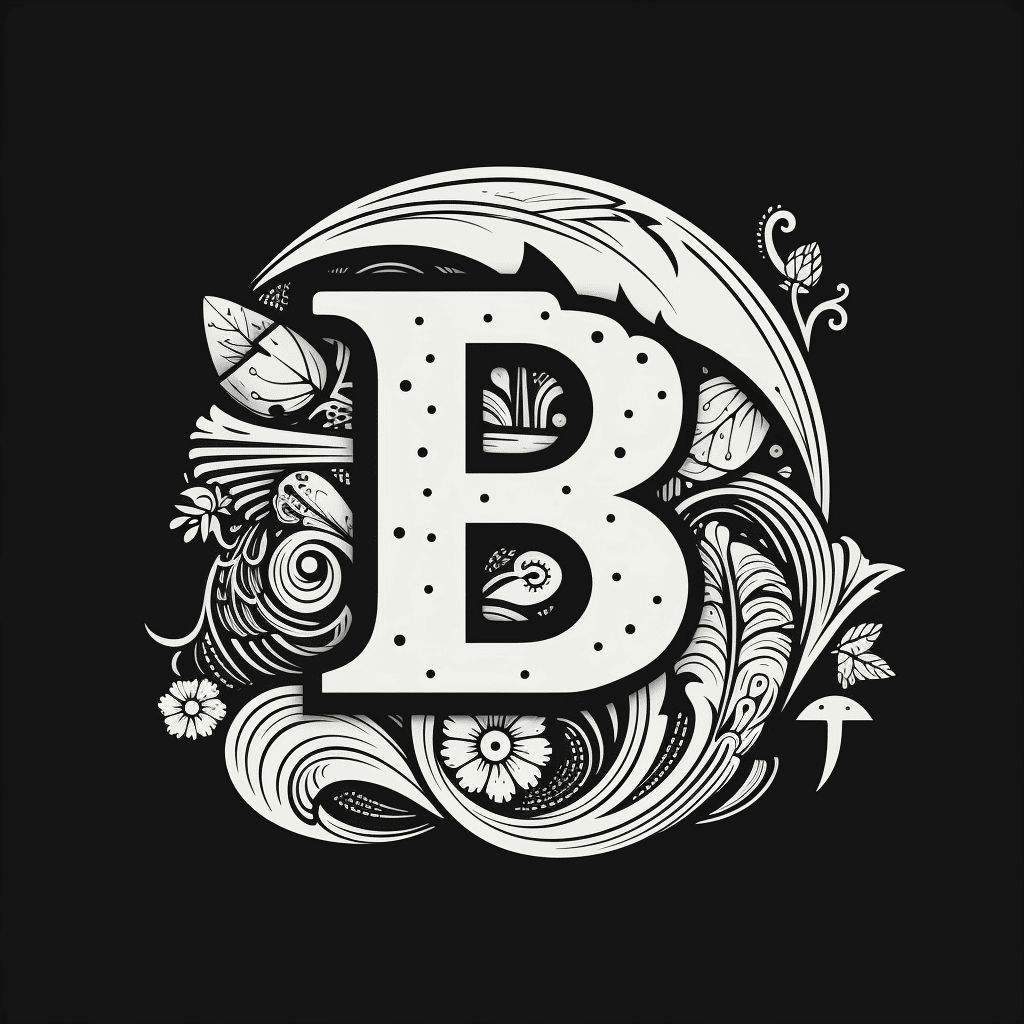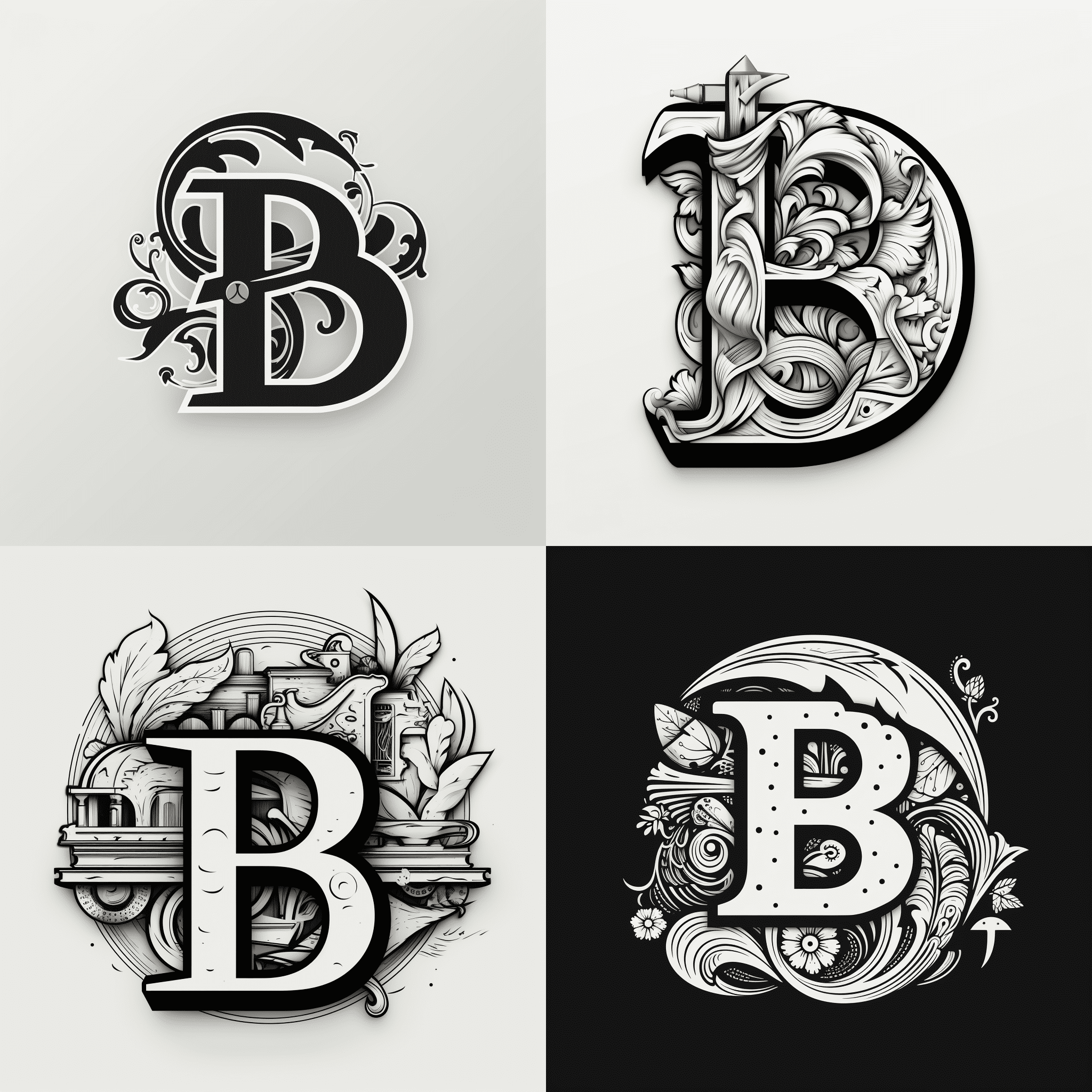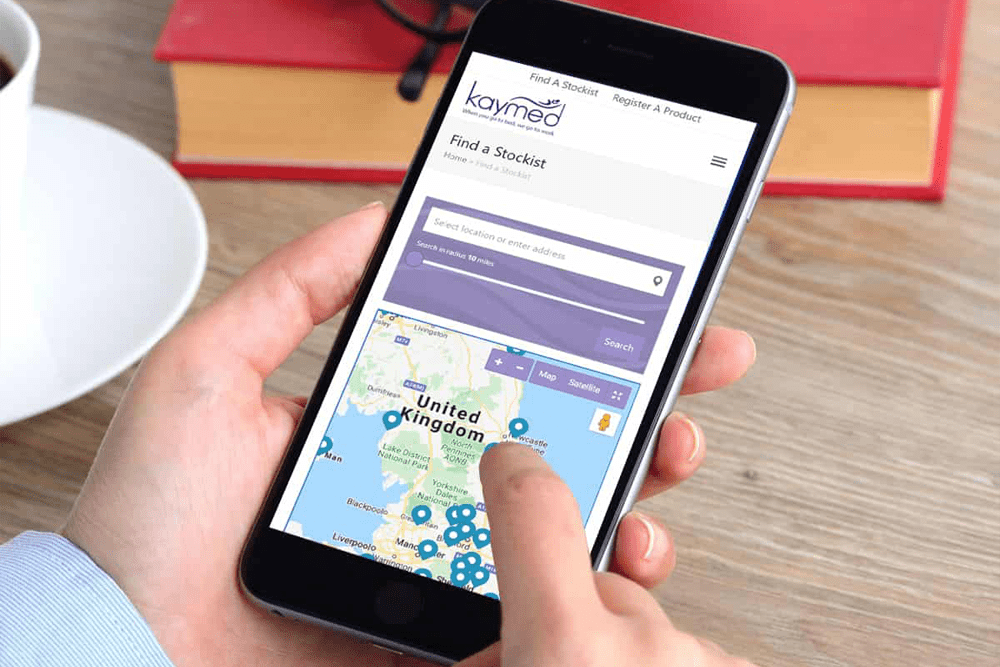Crafting an Effective Brand Name and Logo
In the ever-evolving landscape of business and marketing, a brand name and logo serve as the fundamental pillars upon which a company’s identity is built. A well-crafted brand name and logo have the power to resonate with consumers, encapsulate the essence of a brand, and leave a lasting impression in a crowded marketplace. This article delves into how to create a brand name and logo that not only capture attention but also embody the values, personality, and aspirations of a business.
In a world where consumers are bombarded with a plethora of choices, the significance of a distinct and memorable brand identity cannot be overstated. As businesses seek to forge connections with their target audience, the journey begins with the strategic selection of a brand name and the meticulous design of a logo. From the nuances of linguistic and cultural considerations to the principles of visual communication, this article offers a comprehensive exploration of the strategies, methodologies, and best practices that underlie the creation of a compelling brand name and logo.
The article aims to provide readers with a roadmap that guides them through the creative process. From brainstorming sessions that unearth the essence of a brand to the fusion of creativity and simplicity in logo design, this report is a valuable resource for entrepreneurs, marketers, and designers who seek to establish an enduring brand presence.
Whether you’re launching a start up, rebranding an established enterprise, or simply curious about the mechanics of brand development, the insights contained herein will illuminate the path toward creating a brand name and logo that truly stand out in a dynamic and competitive marketplace.
Stages in creating a brand name
Creating and selecting a brand name is a crucial step in establishing a strong and memorable brand identity. A well-chosen brand name can communicate the essence of your business, evoke positive emotions, and leave a lasting impression on your target audience. The process involves a mix of creativity, research, and strategic thinking.
Firstly, it’s important to understand your brand’s unique attributes, values, and offerings. A brand name should reflect these aspects and resonate with the audience you intend to target. Brainstorming sessions can help generate a wide range of name ideas. During this phase, it’s useful to involve key stakeholders who have a deep understanding of your business and its objectives.
Once you have a list of potential names, it’s essential to evaluate their suitability. Consider factors such as memorability, relevance, and originality. A brand name should be easy to remember, pronounce, and spell. It should also align with your industry and convey the right message to your customers. It’s crucial to ensure the name isn’t already trademarked or in use by another company to avoid legal issues down the line.
Conduct thorough research to check if the shortlisted names are available as domain names for your website and on social media platforms. Consistency in branding across various online channels is key. Additionally, consider linguistic and cultural implications, as a name might have unintended meanings or associations in different languages or cultures.
Feedback is vital during this process. Share the shortlisted names with colleagues, friends, and potential customers to gauge their reactions. Constructive feedback can provide valuable insights and help you refine your options.
Trademark availability is a critical step. Consult legal experts to ensure that the chosen brand name can be legally protected. Securing a trademark helps safeguard your brand’s identity and prevents others from using a similar name that could cause confusion.
Ultimately, the selected brand name should evoke positive emotions, resonate with your target audience, and differentiate your business from competitors. It should tell a story about your brand’s values, mission, and unique selling points. Remember that a brand name is a long-term commitment, so invest time and effort to ensure it aligns with your brand’s identity and future aspirations. By combining creativity, research, feedback, and legal considerations, you can create a brand name that becomes an integral part of your business’s success.
Brainstorming techniques and approaches to come up with a company brand name
There are several brainstorming techniques and approaches you can use to generate a compelling brand name:
- Word Association: Start with a core concept or keyword related to your business. Write down words that come to mind when you think about that concept. Keep branching out with related words and ideas until you have a diverse list of potential names.
- Mind Mapping: Create a visual mind map using the core concept in the centre and branch out with related words, synonyms, and associations. This can help you uncover unique and unexpected name ideas.
- Acronyms: If your company has a longer name, consider creating an acronym from the key words or elements of your business. Make sure the acronym is memorable and relevant.
- Portmanteau: Combine two relevant words or parts of words to create a new, unique name. Famous examples include Microsoft (microcomputer + software) and FedEx (federal + express).
- Blending: Merge parts of two words to create a brand new word. For example, Pinterest (pin + interest) and Instagram (instant + telegram).
- Foreign Languages: Explore words with relevant meanings in other languages. Be cautious of cultural and linguistic considerations to avoid any unintended meanings or misinterpretations.
- Thesaurus Exploration: Use a thesaurus to find synonyms and alternative words related to your business concept. This can help you discover less common yet impactful words.
- Creative Spelling: Play around with the spelling of words to create a distinctive and memorable brand name. Just be careful not to make the spelling too complex or confusing.
- Visual Imagery: Think about the visuals associated with your business. Sketch or describe those visuals, and then try to turn them into a name. This can work well for companies with strong visual identities.
- Storytelling: Consider the story behind your business and what it stands for. Use elements from that story to craft a meaningful and evocative name.
- Emotion and Feeling: Think about the emotions you want your brand to evoke. Brainstorm words and phrases that capture those feelings.
- Competitor Analysis: Study the brand names of your competitors to identify patterns, trends, and naming conventions. This can help you brainstorm unique alternatives.
- Collaborative Brainstorming: Get a group of creative individuals together to brainstorm collectively. Sometimes, bouncing ideas off each other can lead to unexpected and innovative names.
- Random Word Generation: Use random word generators or a dictionary to find words you might not have considered. Pair these words with other relevant terms to create unique combinations.
- Feedback and Testing: Once you have a list of potential names, gather feedback from friends, family, colleagues, or potential customers. Test the names for ease of pronunciation, memorability, and overall appeal.
The best brand names are usually easy to spell, pronounce, and remember, and they convey the essence of your business. Make sure to also check for trademark availability before finalising your choice.
Trademark considerations
When developing a brand name and logo in the UK, several trademark considerations should be carefully examined to ensure that your intellectual property is protected and to prevent potential legal issues down the line. Trademarks play a crucial role in distinguishing your goods or services from those of competitors and help build brand recognition. Here are some key factors to consider:
Distinctiveness: One of the primary requirements for a successful trademark is distinctiveness. Your brand name and logo should be unique enough to easily identify your products or services and set them apart from others in the market. Avoid using common words or generic terms that might be difficult to protect as trademarks.
Availability: Before finalising your brand name and logo, it’s essential to conduct thorough trademark searches to ensure that the name and design are not already registered by someone else in the UK or in related markets. This prevents potential conflicts and legal disputes over the use of similar marks.
Likelihood of Confusion: The UK’s Intellectual Property Office (IPO) assesses the likelihood of confusion between your proposed trademark and existing registered trademarks. If your brand name or logo is too similar to an existing mark, it could lead to confusion among consumers and might not be registrable.
Descriptiveness: Trademarks that are overly descriptive of the goods or services they represent might be rejected or face difficulties in registration. Choosing a brand name or logo that suggests a positive attribute of your product without being overly descriptive is a delicate balance.
Generic Terms: Avoid using generic terms that describe the product or service itself. Generic terms cannot be trademarked as they are necessary for others in the industry to use. For example, you can’t trademark the term “Computer” for a computer brand.
Infringement and Enforcement: Registering your brand name and logo as trademarks provides you with legal rights to enforce against potential infringement. If someone else uses a confusingly similar mark, you have the right to take legal action to protect your intellectual property.
Classes of Goods and Services: Trademarks are registered in specific classes of goods and services. It’s important to identify the appropriate classes that cover your products or services accurately. This ensures comprehensive protection for your brand across relevant industries.
Proper Use: Properly using your registered trademarks is crucial for maintaining their validity. Failing to use a trademark for a continuous period could result in its cancellation. Consistent and correct usage in marketing materials, packaging, and communications helps strengthen your trademark rights.
Renewal: Trademarks need to be renewed periodically to remain in effect. In the UK, trademarks are initially registered for ten years and can be renewed indefinitely, provided they are still in use and you continue to pay the renewal fees.
When developing a brand name and logo in the UK, it’s vital to consider factors like distinctiveness, availability, potential confusion, descriptiveness, enforcement, proper usage, and renewal. Seeking legal advice from a trademark attorney or specialist can greatly assist in navigating the complex landscape of trademark law and ensuring the long-term protection of your brand identity.
The difference between a brand name and logo
A brand name and a logo are two distinct elements that play crucial roles in shaping a business’s identity and perception in the marketplace. The brand name, also referred to as the business name or company name, is the verbal or textual representation of the business’s identity. It’s the unique identifier that customers, partners, and stakeholders use to refer to the business. A well-chosen brand name can convey the essence, values, and purpose of the business. It is the foundation upon which the entire brand identity is built. For instance, “Apple” is a brand name that conjures associations of innovation and sleek design.
On the other hand, a logo is a visual symbol or emblem that represents the brand. It’s a graphical representation that often incorporates design elements, colours, and typography to visually communicate the brand’s identity. A logo is designed to be distinctive and easily recognisable, even at a glance. It serves as a visual shorthand for the brand name and encapsulates the brand’s values and attributes. Take the iconic Apple logo – a stylised apple with a bite taken out of it – as an example. The logo is instantly recognisable and has become synonymous with the brand itself.
While a brand name is primarily communicated through language, a logo relies on visual elements to create a memorable and recognisable representation of the brand. Think of the brand name as the spoken or written aspect of the brand identity, and the logo as the visual representation that complements and reinforces that identity.
A brand name and a logo are two distinct but interconnected elements of a business’s identity. The brand name is the verbal or textual identifier that communicates the essence of the business, while the logo is the visual symbol that reinforces that identity and aids in recognition. Together, these components work in tandem to establish a business’s presence in the minds of consumers and create a lasting impression in the competitive marketplace.
Stages in creating a logo
Creating a logo for a company involves several steps to ensure that the final design effectively represents the brand and its values. Here’s a general process to guide you through creating a logo:
- Discovery and Research:
- Understand the company: Learn about the company’s mission, values, products/services, target audience, and overall brand identity.
- Research competitors: Analyse the logos of similar businesses to identify trends, styles, and unique design elements.
- Conceptualisation:
- Brainstorm: Generate ideas, concepts, and visual elements that could represent the brand. Consider the company’s personality, values, and industry.
- Sketching: Start with rough sketches to visualise potential logo designs. This helps explore different layouts and concepts.
- Design:
- Digital creation: Translate your sketches into digital design software like Adobe Illustrator or other graphic design tools.
- Typography: Choose appropriate fonts that reflect the brand’s tone and message. The typography should be legible and complement the logo’s visual elements.
- Visual elements: Create icons, symbols, or imagery that convey the brand’s identity. These elements should be relevant and memorable.
- Colour Selection:
- Choose colours: Select a colour palette that resonates with the brand’s personality and aligns with its message. Consider the psychological impact of different colours.
- Simplicity and Scalability:
- Keep it simple: A successful logo is often simple and easy to recognise. Avoid overly complex designs that can become unclear when scaled down or reproduced in different mediums.
- Scalability: Ensure the logo looks good at various sizes, from small business cards to large banners.
- Feedback and Iteration:
- Gather feedback: Share the initial logo designs with stakeholders, such as the company’s owners, employees, and potential customers. Incorporate their feedback to improve the design.
- Iteration: Make necessary adjustments and refinements based on the feedback received.
- Legal Considerations:
- Trademark search: Check if the logo design resembles any existing trademarks to avoid legal issues down the line.
- Trademark registration: Once the design is finalised, consider registering the logo as a trademark to protect its unique identity.
- Finalisation:
- Choose the final design: Select the logo design that best encapsulates the company’s brand identity and resonates with stakeholders.
- Formats: Prepare the logo in various formats (vector, raster) and sizes for different uses (print, digital, merchandise).
- Usage Guidelines:
- Brand guidelines: Create a brand guidelines document that outlines how the logo should be used. This includes specifications for colours, sizes, clear space, and placement.
- Launch and Integration:
- Implement the logo: Introduce the new logo across all company assets, including websites, business cards, stationery, signage, and social media profiles.
The logo is a crucial visual representation of the brand, so taking the time to thoroughly go through these steps will help ensure a logo that effectively communicates the company’s values and resonates with its audience.
Brand Guidelines
Brand guidelines, also known as brand style guides or brand manuals, are comprehensive documents that outline the visual and communicative elements that define a company’s brand identity. They serve as a reference tool for maintaining consistency and coherence across all brand-related materials, from marketing collateral and advertisements to social media posts and website design. In essence, brand guidelines act as a blueprint that helps both internal teams and external partners understand and implement the brand’s essence, values, and personality accurately.
A well-structured brand guidelines document typically includes several key components to ensure a unified and recognisable brand presence. One of the core elements is the brand’s logo usage guidelines. This section outlines how the logo should be displayed, specifying minimum sizes, clear space requirements, permissible colour variations (including black and white versions), and any unapproved alterations that should be avoided. Consistency in logo usage ensures that the brand’s visual identity remains intact across different platforms and applications.
Another crucial aspect covered in brand guidelines is the colour palette. Here, the document presents the primary and secondary colours that constitute the brand’s colour scheme. Each colour is specified with its respective Pantone, CMYK, RGB, and HEX values to ensure accurate reproduction across both digital and print media. Consistent colour usage contributes to instant brand recognition and evokes specific emotions associated with the brand.
Typography guidelines are also a fundamental component. These guidelines outline the typefaces and font families that align with the brand’s identity. Instructions on font size, line spacing, and text hierarchy are provided to maintain readability and consistency in all written materials. The use of specific fonts can convey the brand’s tone and voice, contributing to a cohesive brand experience.
Photography and imagery guidelines detail the style and type of visuals that should be used in brand communications. This might include preferences for photography style (e.g., lifestyle, product-focused), image filters, and the treatment of visuals to align with the brand’s aesthetics. Clear instructions on the types of images to avoid are also provided to prevent visual dissonance.
Additionally, brand guidelines often address layout and design principles. These include guidance on grid systems, margins, and proportions that help maintain a consistent visual structure across various design materials, from brochures and presentations to digital interfaces.
In the realm of communication, brand guidelines may encompass tone of voice and messaging guidelines. These define the brand’s personality, style of communication, and specific language to use in different contexts. Whether the brand adopts a casual, formal, or playful tone, maintaining a consistent voice ensures that brand messaging resonates with the intended audience.
Lastly, digital and online guidelines have become increasingly important with the rise of digital platforms. This section covers aspects such as social media usage, email signatures, website design principles, and digital advertising guidelines. These ensure that the brand’s online presence aligns with its offline identity, creating a seamless brand experience across all touchpoints.
In conclusion, brand guidelines are comprehensive documents that provide a roadmap for maintaining a consistent and coherent brand identity across all forms of communication. By including elements such as logo usage guidelines, colour palettes, typography rules, photography preferences, layout principles, communication styles, and digital guidelines, these documents help to create a strong and recognisable brand that resonates with audiences and fosters brand loyalty.











